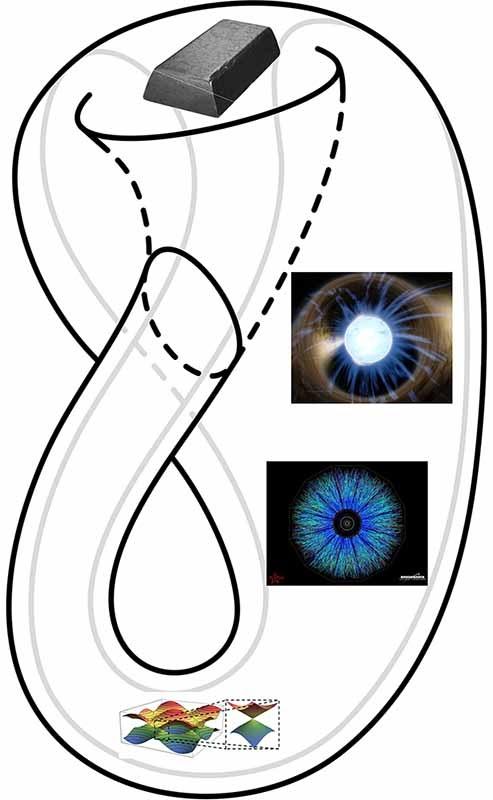Topological Phases of Matter: From Low to High Energy

Summary and content:
The study of topological phases of matter has transformed our understanding of phase transitions and brought together insights from different subfields of physics. These phases and associated transitions cannot be described within the standard Landau paradigm of phase transitions involving global symmetries and local order parameters. Instead, one has to use ideas related to statistics of excitations, generalized global symmetries, and various notions of topological order to discuss these phase transitions. These developments have applications in several areas of research in high energy, nuclear, and condensed matter physics.
This program aims to bring together the accumulated knowledge of condensed matter physics, particle physics and nuclear physics to facilitate a re-examination of the QCD phase diagram using tools that go beyond the Landau paradigm, and explore further connections between nuclear matter, lattice gauge simulations, and topological Dirac and Weyl semimetals. The program will also highlight new inter-connected developments in condensed matter and QFT, including fractons and their field theory descriptions, higher form symmetries, and symmetry protected topological (SPT) phases involving onsite and spatial symmetries.
First week: The first week of the program is aimed at exploring our current understanding of the quantum phase transitions in the QCD phase diagram at finite density and low temperature. There will be talks on quark matter, color superconductivity, impact of phase transitions on neutron star physics, possibility of transitions driven by changes in topological properties etc.
Second and third week: There will be talks on symmetry protected and symmetry enriched topological phases of matter, hydrodynamics of quantum hall systems, EFT of magnetohydrodynamics from generalized global symmetries, topological field theories, topological field theories for fractonic systems, fractional quantum Hall systems, generalized global symmetries, discrete anomalies. These two weeks will also have talks on lattice gauge theory and its connection with topological phases. More specifically, there are going to be talks on chiral gauge theories and their connection with topological phases of matter, relativistic ultraviolet quantum field theories displaying topological phases in the infrared, cold atom simulations of topological phases etc.
